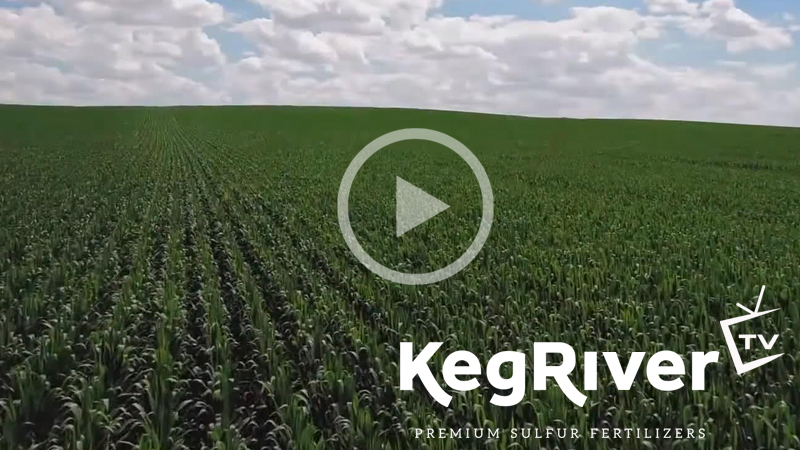Watch: Sulfur Deficiency in Corn and Soybean Crops

Sulfur deficiency in corn and soybean crops wasn’t a common issue 30 years ago. But that’s changed.
WATCH this 2-part episode, where Ray Dowbenko explains why sulfur deficiency is occurring more frequently today, and why this underlines the importance of ensuring season-long sulfur availability for your corn and soybean crops.
Dowbenko, an independent agronomist and crop consultant, says producers used to be able to count on 10 to 20 pounds of sulfate sulfur coming each year within annual rain fall. Legislation to reduce environmental emissions has changed that.
“The Clean Air Act in the U.S. and similar legislation in Canada has removed a lot of atmospheric deposition of sulfur,’’ says Dowbenko. “(Sulfur) deficiency is becoming more and more prevalent. Soil test programs and surveys in North America clearly show this.’’
Soils at risk
Dowbenko says soil with three percent or less organic matter are at higher risk of sulfur deficiency. That’s important because it’s the organic matter that holds sulfur. Over time, microbes break down the organic matter – making sulfur available to the plant, on-demand, throughout the growing season.
Other soils potentially at risk include sandy ground, course-textured soils, and soils prone to leaching.
Symptoms of sulfur deficiency
One of the things plants use sulfur for is chlorophyll production. And while sulfur is very mobile in soil, it doesn’t move once it’s inside the plant. So, if you spot pale green leaflets in your soybean canopy or in the upper, younger leaves of your corn crop, your plants may not be getting the amount of sulfur required to produce the necessary chlorophyll. This is what gives healthy leaves their normal green color.
Other signs of sulfur deficiency include stunted plant growth, poor grain or pod fill, and, in corn, the appearance of striping between leaf veins. Research shows a sulfur deficiency in soybeans can create nitrogen deficiency, as well.
Dowbenko says sulfur deficiency is a growing problem that producers cannot afford to overlook.
“We’re not getting the sulfur that we used to get and we need to manage that better.’’




